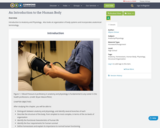
Introduction to Anatomy and Physiology. Also looks at organization of body systems and incorporates anatomical terminology.
- Subject:
- Anatomy/Physiology
- Material Type:
- Homework/Assignment
- Author:
- Allyson Ortner
- Date Added:
- 09/09/2020

Introduction to Anatomy and Physiology. Also looks at organization of body systems and incorporates anatomical terminology.
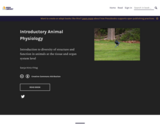
Introduction to diversity of structure and function in animals at the tissue and organ system level
Word Count: 55929
(Note: This resource's metadata has been created automatically by reformatting and/or combining the information that the author initially provided as part of a bulk import process.)

Introduction to diversity of structure and function in animals at the tissue and organ system level
Word Count: 59742
(Note: This resource's metadata has been created automatically by reformatting and/or combining the information that the author initially provided as part of a bulk import process.)

Basic overview of hormones and the endocrine system.
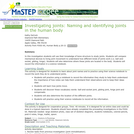
Short Description: This activity is a classroom investigation of human joints. Students will identify joints and use their science notebooks to record their findings using drawings and words.
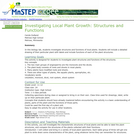
This activity is a classroom investigation where students gather descriptive data on two different plants with a partner, and on other plants during a classroom discussion.They will then interpret their findings, and classify the plants, if applicable, into monocots or dicots.

This resource is a video abstract of a research paper created by Research Square on behalf of its authors. It provides a synopsis that's easy to understand, and can be used to introduce the topics it covers to students, researchers, and the general public. The video's transcript is also provided in full, with a portion provided below for preview:
"A critical cellular process that occurs in the wake of a stroke in mice could hint at how to salvage otherwise compromised brain tissue. Strokes happen when the flow of blood to the brain is blocked, most often by a blood clot in a vessel. This creates two zones of injury: a central core and a radiating penumbra. Deprived of oxygen and glucose, brain cells in the core can die within minutes. Those in the penumbra are not as severely damaged. But if blood flow isn’t re-established within hours, those cells will succumb too. That’s why fast responses to strokes are so important—especially among the elderly, who are less resilient than younger sufferers of stroke. New research shows that that disparity between aged and young brains could be due to differences in calcium ion activity brought on by stroke. After inducing stroke in old and young mice, researchers found that spontaneous calcium activity was reduced in the brains of young mice, whereas it was increased in the brains of old mice..."
The rest of the transcript, along with a link to the research itself, is available on the resource itself.

Jargon is a card game that requires explaining the concepts of anatomy and physiology without using the jargon on the card. The game is printable and playable online through EduSci.us
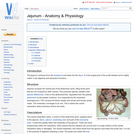
The jejunum continues from the duodenum and leads into the ileum. It is the longest part of the small intestine and is highly coiled. It has digestive and absorptive functions.
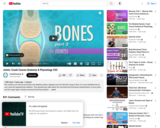
We continue our look at your bones and skeletal system, skipping over the silly kid's song in favor of a more detailed look at your axial and appendicular skeleton. This episode also talks about the structural and functional classifications of your joints and the major types of body movement that they facilitate.
Chapters:
Introduction: Joints
Axial Bones: Cranial, Facial, Vertebrae, & Thoracic Cage
Appendicular Bones: Limbs & Pelvis
Types of Joints
Functional Classification of Joints: Synarthroses, Amphirthroses, Diarthroses
Structural Classification of Joints: Fibrous, Cartilaginous, Synovial
Types of Synovial Joints
Plane Joints - Gliding Movements
Hinge Joints - Angular Movements: Flexion, Extension, & Hyperextension
Condylar Joints - More Angular Movements: Abduction, Adduction, & Circumduction
Ball & Socket Joints - Rotational Movements
Saddle Joints - Opposition Movement
Pivot Joints - Supination & Pronation
Review
Credits
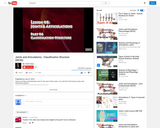
In this video we take a look at how we classify joints. .
Lesson 6 in our Joints and Articulations series. This is part of our Anatomy and Physiology lecture series.
If this video helps you please be sure to LST -like subscribe and tell your friends. Your support help us make more videos. For the complete series please visit http://mrfordsclass.net/
Videos in the skeletal system series:
-Introduction to Joints and Articulations (08:01): http://youtu.be/DJcMQQ-u04I
-Hyaline Cartilage (08:02): http://youtu.be/g8RW8HfUNEM
-Fibrocartilage (08:03): http://youtu.be/N6t7hqDcmlE
-Elastic Cartilage (08:04): http://youtu.be/yNOzgwx4r5w
-Joint Fundamentals (08:05): http://youtu.be/urxeIGf4Olk
-Classification Structure (08:06): http://youtu.be/9xSXGZQqpcw
-Synovial Joint Movements (08:11): http://youtu.be/-GCgaoRdeaU
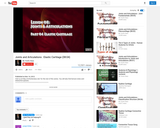
In this video we take a closer look at the histology and function of Elastic Cartilage.
Lesson 4 in our Joints and Articulations series. This is part of our Anatomy and Physiology lecture series.
If this video helps you please be sure to LST -like subscribe and tell your friends. Your support help us make more videos. For the complete series please visit http://mrfordsclass.net/
Videos in the skeletal system series:
-Introduction to Joints and Articulations (08:01): http://youtu.be/DJcMQQ-u04I
-Hyaline Cartilage (08:02): http://youtu.be/g8RW8HfUNEM
-Fibrocartilage (08:03): http://youtu.be/N6t7hqDcmlE
-Elastic Cartilage (08:04): http://youtu.be/yNOzgwx4r5w
-Joint Fundamentals (08:05): http://youtu.be/urxeIGf4Olk
-Classification Structure (08:06): http://youtu.be/9xSXGZQqpcw
-Synovial Joint Movements (08:11): http://youtu.be/-GCgaoRdeaU
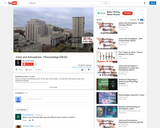
In this video take a closer look at the histology and function of fibrocartilage.
Lesson 3 in our Joints and Articulations series. This is part of our Anatomy and Physiology lecture series.
If this video helps you please be sure to LST -like subscribe and tell your friends. Your support help us make more videos. For the complete series please visit http://mrfordsclass.net/
Videos in the skeletal system series:
-Introduction to Joints and Articulations (08:01): http://youtu.be/DJcMQQ-u04I
-Hyaline Cartilage (08:02): http://youtu.be/g8RW8HfUNEM
-Fibrocartilage (08:03): http://youtu.be/N6t7hqDcmlE
-Elastic Cartilage (08:04): http://youtu.be/yNOzgwx4r5w
-Joint Fundamentals (08:05): http://youtu.be/urxeIGf4Olk
-Classification Structure (08:06): http://youtu.be/9xSXGZQqpcw
-Synovial Joint Movements (08:11): http://youtu.be/-GCgaoRdeaU
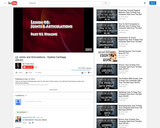
In this video we look at the histology and function of hyaline cartilage.
Lesson 2 in our Joints and Articulations series. This is part of our Anatomy and Physiology lecture series.
If this video helps you please be sure to LST -like subscribe and tell your friends. Your support help us make more videos. For the complete series please visit http://mrfordsclass.net/
Videos in the skeletal system series:
-Introduction to Joints and Articulations (08:01): http://youtu.be/DJcMQQ-u04I
-Hyaline Cartilage (08:02): http://youtu.be/g8RW8HfUNEM
-Fibrocartilage (08:03): http://youtu.be/N6t7hqDcmlE
-Elastic Cartilage (08:04): http://youtu.be/yNOzgwx4r5w
-Joint Fundamentals (08:05): http://youtu.be/urxeIGf4Olk
-Classification Structure (08:06): http://youtu.be/9xSXGZQqpcw
-Synovial Joint Movements (08:11): http://youtu.be/-GCgaoRdeaU
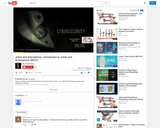
In this video we look at the basics of joints and articulations.
Lesson 1 in our Joints and Articulations series. This is part of our Anatomy and Physiology lecture series.
If this video helps you please be sure to LST -like subscribe and tell your friends. Your support help us make more videos. For the complete series please visit http://mrfordsclass.net/
Videos in the skeletal system series:
-Introduction to Joints and Articulations (08:01): http://youtu.be/DJcMQQ-u04I
-Hyaline Cartilage (08:02): http://youtu.be/g8RW8HfUNEM
-Fibrocartilage (08:03): http://youtu.be/N6t7hqDcmlE
-Elastic Cartilage (08:04): http://youtu.be/yNOzgwx4r5w
-Joint Fundamentals (08:05): http://youtu.be/urxeIGf4Olk
-Classification Structure (08:06): http://youtu.be/9xSXGZQqpcw
-Synovial Joint Movements (08:11): http://youtu.be/-GCgaoRdeaU
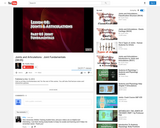
In this video we take a look at some fundamentals of joints and articulations.
Lesson 5 in our Joints and Articulations series. This is part of our Anatomy and Physiology lecture series.
If this video helps you please be sure to LST -like subscribe and tell your friends. Your support help us make more videos. For the complete series please visit http://mrfordsclass.net/
Videos in the skeletal system series:
-Introduction to Joints and Articulations (08:01): http://youtu.be/DJcMQQ-u04I
-Hyaline Cartilage (08:02): http://youtu.be/g8RW8HfUNEM
-Fibrocartilage (08:03): http://youtu.be/N6t7hqDcmlE
-Elastic Cartilage (08:04): http://youtu.be/yNOzgwx4r5w
-Joint Fundamentals (08:05): http://youtu.be/urxeIGf4Olk
-Classification Structure (08:06): http://youtu.be/9xSXGZQqpcw
-Synovial Joint Movements (08:11): http://youtu.be/-GCgaoRdeaU
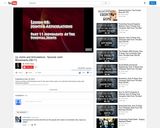
This video covers the type movements by the synovial joints. It looks at flexion, extension, abduction, adduction, circumduction, rotation, plantar flexion, etc...
Lesson 11 in our Joints and Articulations series. This is part of our Anatomy and Physiology lecture series.
If this video helps you please be sure to LST -like subscribe and tell your friends. Your support help us make more videos. For the complete series please visit http://mrfordsclass.net/
Videos in the skeletal system series:
-Introduction to Joints and Articulations (08:01): http://youtu.be/DJcMQQ-u04I
-Hyaline Cartilage (08:02): http://youtu.be/g8RW8HfUNEM
-Fibrocartilage (08:03): http://youtu.be/N6t7hqDcmlE
-Elastic Cartilage (08:04): http://youtu.be/yNOzgwx4r5w
-Joint Fundamentals (08:05): http://youtu.be/urxeIGf4Olk
-Classification Structure (08:06): http://youtu.be/9xSXGZQqpcw
-Synovial Joint Movements (08:11): http://youtu.be/-GCgaoRdeaU
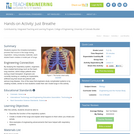
Students explore the inhalation/exhalation process that occurs in the lungs during respiration. Using everyday materials, each student team creates a model pair of lungs.

This book is a cloned version of KINES 200: Introductory Neuroscience by Peter L.E. van Kan, Ph.D., published using Pressbooks under a CC BY (Attribution) license. It may differ from the original.

This resource is a video abstract of a research paper created by Research Square on behalf of its authors. It provides a synopsis that's easy to understand, and can be used to introduce the topics it covers to students, researchers, and the general public. The video's transcript is also provided in full, with a portion provided below for preview:
"The ketogenic diet may be one of the hottest trends in weight management, but doctors have long known of its potential to reduce seizures in those with epilepsy. In a new article in Physiological Reports, scientists suggest that strict adherence to the diet may not be needed to achieve this neuroprotective effect. Through a series of experiments in rats, they show that supplementing a normal, carbohydrate-rich diet with specific ketogenic agents may significantly delay seizures. The team specifically focused on tonic-clonic seizures caused by exposure to high levels of oxygen. This central nervous system oxygen toxicity is a complication that can arise following hyperbaric oxygen therapy, which involves inhaling pure oxygen in a pressurized or hyperbaric chamber. This kind of treatment is used to manage various medical conditions, including air/gas embolism, decompression sickness, carbon monoxide poisoning and diabetic wounds..."
The rest of the transcript, along with a link to the research itself, is available on the resource itself.